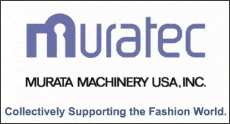
Digital Textile Printing US event covers wide gamut
 |
|---|
 |
 |
 |
 |
 |
 |
 |
 |
 |
 |
 |
 |
 |
 |
 |
 |
 |
 |
 |
 |
Posted September 6, 2017
By Devin Steele (Dsteele@eTextileCommunications.com)
ATLANTA – One of the hot trends in the textile industry, of course, is digital printing, and that was the subject of the first-ever Digital Textile Printing US Conference, organized by Smithers Pira.
The event, which took place here this summer, attracted an audience that spanned the entire supply chain, including a range of textile printers, end users and a supporting supply chain in technology providers.
Presentations focused on the drivers for digital textile printing, including sustainability, personalization and mass customization, and explored additional applications for digital textile printing and technical advances in the market.
“We’re projecting almost 18 percent growth in the market between 2016 and 2021 in digital textiles, which is dramatic,” Dr. Paul Ewing, an associate at Smithers Pira and managing partner at consultancy Ewing Innovation, said in kicking off the two-day event.
The market is forecast to grow to $2.6 billion by 2021, he added.
Ewing called digital textile printing a “disruptive technology almost 50 years in the making,” providing a brief history that started in 1970 when GB filed a patent covering a two-color, 10-inch textile printer developed in collaboration between ICI & Cambridge Consultants. By 2011, a single-pass, drop-on-demand, high-productivity inkjet printer, MS LaRio, was introduced.
Last year, the global digital textile printing market consisted of 50.50 percent clothing, 35.10 percent displays, 7.90 percent household and 6.40 percent technical, he said.
General growth drivers included short-run economics, design flexibility, customization & variation, color consistency and a streamlined design process, Ewing said.
On the demand side, fast fashion, e-commerce, customization and sustainability are among key drivers, he added. Pushing growth on the supply side are printer portfolios, technology, improved reliability, increasing cost effectiveness and market structure, the latter of which included a broader chemical industry restructuring, he noted.
Other speakers
Also presenting were:
-
Marci Kinter, vice president of Government and Business Information for the Specialty Graphic Imaging Association (SGIA), who discussed how increasing a company’s sustainability footprint it differentiate itself and reduce operating costs;
-
Mark Abramson, founder & CEO, Printform Corp., who talked about current trends in digital textile printing and the Federation of European Screen Printing Associations;
-
Michael Sanders, vice president of Pacific Coast Fabrics, who presented an overview of digital fabric manufacturing;
-
Reid Lutter, owner & CEO of Podiumwear Custom Sport Apparel Co., who discussed the Minnesota company he and his wife founded and the challenges and opportunities of made-in-America custom textiles;
-
Ken Bach, business development director of Aberdeen Fabrics, who covered how textile companies work with clients to utilize digital and industry trends;
-
Ken VanHorn, director of marketing at Mimaki USA, who went over a case study covering digital textile printing in fashion and retail clothing;
-
Mike Wozny, senior product manager at EFI, who explained ways to succeed in the soft signage market;
-
Luke Schraw, product engineer at Laser Modules Group and LasX Industries, Inc., who demonstrated the possibilities of high-speed laser cutting, aesthetic finishing and technical surface treatments.
-
Ray Weiss, digital imaging specialist at SGIA, who discussed accuracy and verification in color management;
-
Hamid M. Shirazi, Ph.D., global technical promotions manager, Fujifilm Imaging Colorants, who reviewed his company’s inkjet technology;
-
Dave Clark, Ink Jet Business Development, North America at Huntsman, who provided an overview of some of the basic technical requirements for the automotive and outdoor furnishings markets, using some digitally printed fabric and test results as examples;
-
John Ingraham, digital printing specialist, ingmagine, who spoke via Skype about printing on garments vs. fabric rolls, garment printing applications, digital vs. screen printing and production pricing and costing;
-
Hitoshi Ujiie, program director, Surface Imaging at Philadelphia University, who explained “Surface Imaging as a new trans-disciplinary process;
-
Scott Donovan, managing director at Bleuprint Creative, who discussed types of digital workflow solutions;
-
Dr. Kai Bar, president at Adphos Digital Printing, who went over ways to improve speed and print quality in digital textile printing;
-
Traian Luca, co-founder and CEO, Gemini CAD Systems, who explained the workflow for mass customization of digital printed sportswear; and
-
Mark Sawchak, owner of Expand Systems, who talked about future opportunities for digital textile printing.
Dave Brewer of CTO moderated a panel discussion, “Delivering on the Promise of Digital Textiles by Achieving a Better Workflow,” which included several industry experts.













